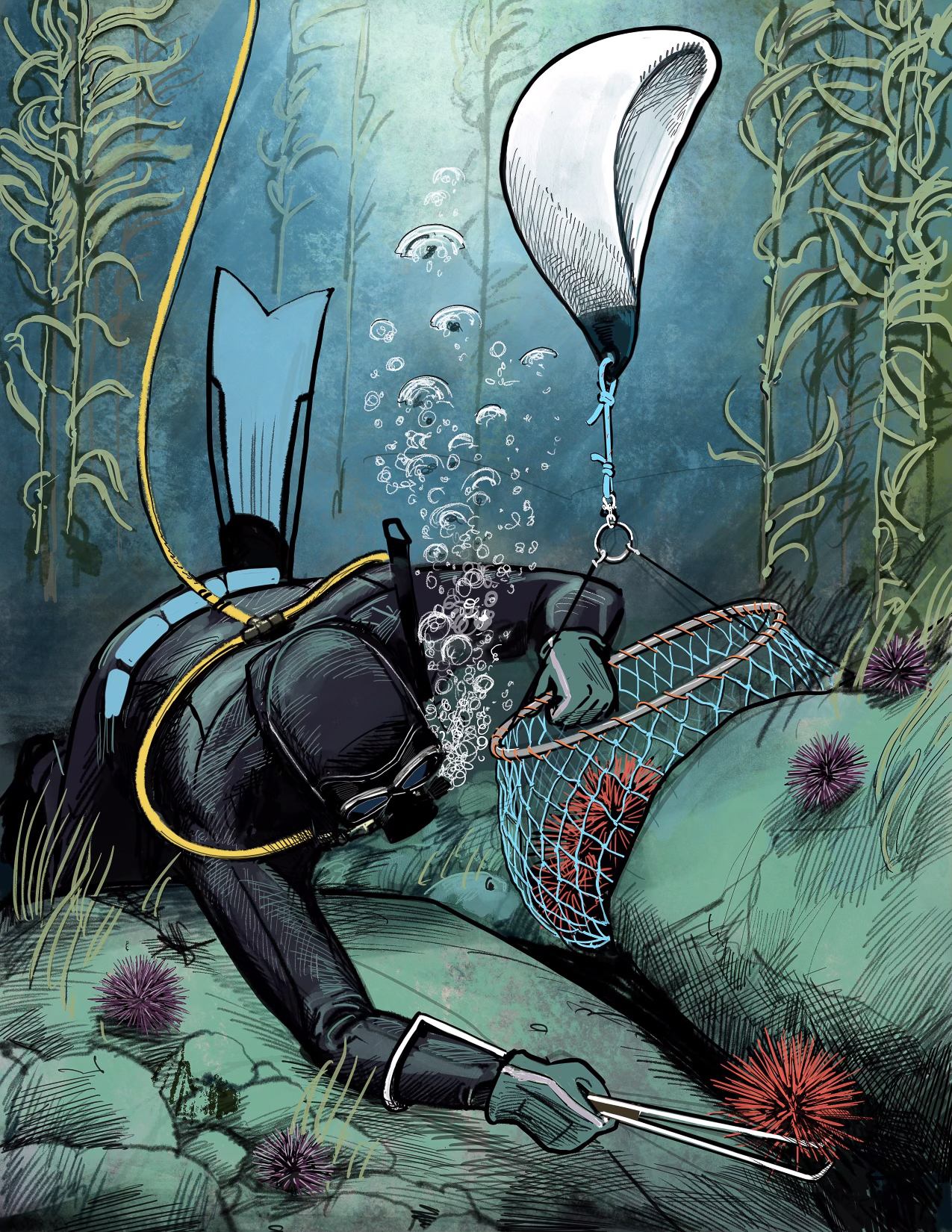
Commercial dive fisheries entail collecting targeted species by hand at depths typically less than 100 feet. West Coast dive fisheries include primarily those for sea urchins, sea cucumbers and geoduck clams.
Sea urchins: Red, purple and green sea urchins are commercially fished by divers. Some commercial divers use SCUBA tanks, but most use hookah gear, a surface-supplied air system, to breathe during dives. This system provides an unlimited supply of air to the diver through a hose connected to an air compressor onboard the vessel. Once divers locate sea urchins in a fishable area, they harvest urchins that are the right (legal) size and quality by hand, often using a specialized handheld rake. They then place the sea urchins in a large mesh bag. When the bag is full or the diver is ready to move on, the bag is lifted onto the boat using a small motorized crane called a davit or winch. On board, the collected sea urchins are placed in either a holding tank with fresh oxygenated seawater or in a bin and covered with wet material (often burlap sacks) to keep them cool and wet.
Sea cucumber: The giant red sea cucumber and warty sea cucumber are commercially fished by divers using similar methods to those used for collecting sea urchins. Using hookah or SCUBA tanks to breathe underwater, divers locate warty sea cucumbers in a fishable area and harvest those of good market quality. Because sea cucumbers are soft and more delicate than sea urchins, divers collect and place them into small “game” bags that have small mesh holes. The bags are lifted onto the boat and the cucumbers are placed in a holding tank with fresh seawater to keep them cool and wet.
Geoduck clams: Geoducks are also commercially fished by divers who collect them by hand underwater. These divers, too, use hookah or SCUBA tanks that supply air while divers are underwater. Once the divers locate geoducks in a fishable area, they use a water hose to loosen the sand and mud around the clams’ burrows. They then extract the geoducks from their burrows and place them in a large mesh bag. When the bag is full or the diver is ready to move on, the bag is lifted onto the boat using a davit, a small motorized crane. The collected geoducks are then placed in a holding tank with water or are covered with wet material (often burlap sacks) to keep them cool and moist.
